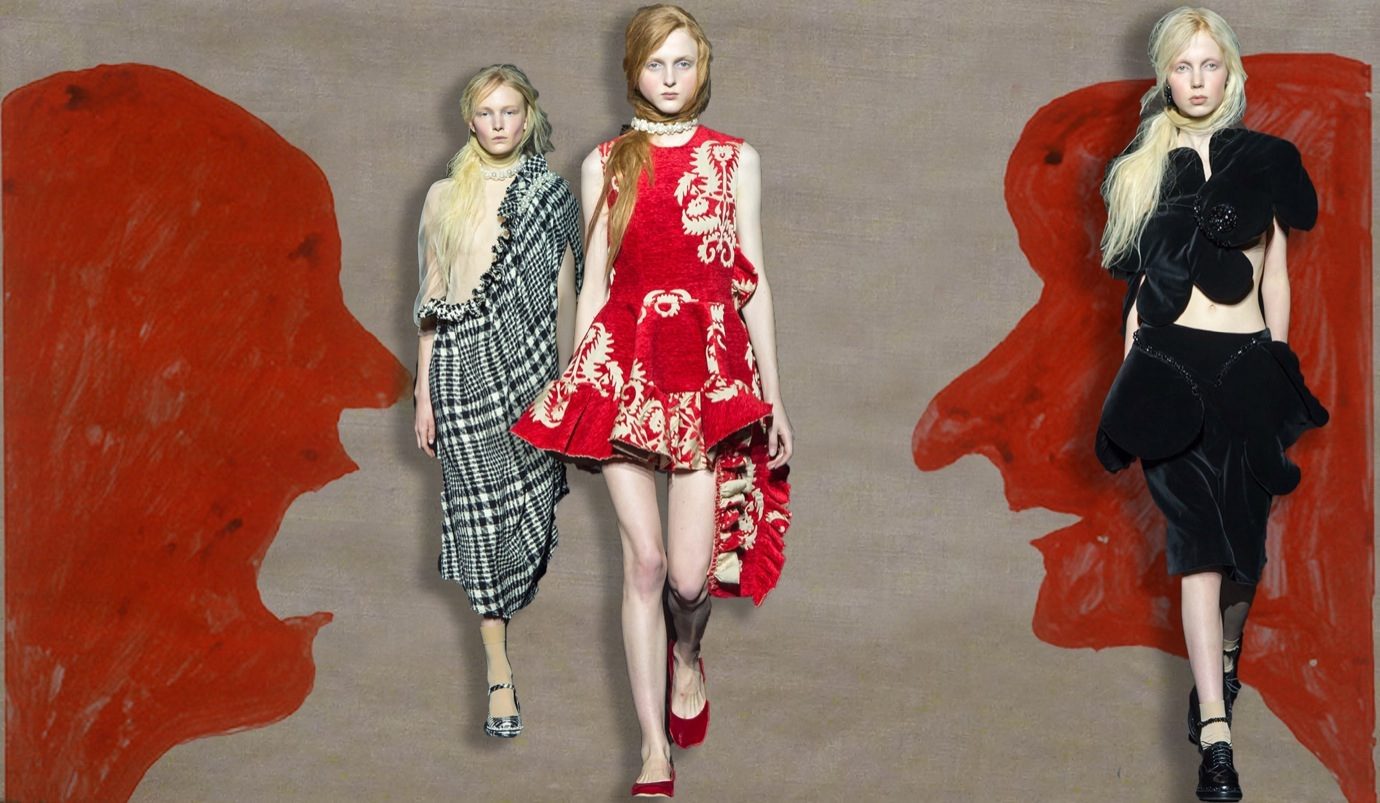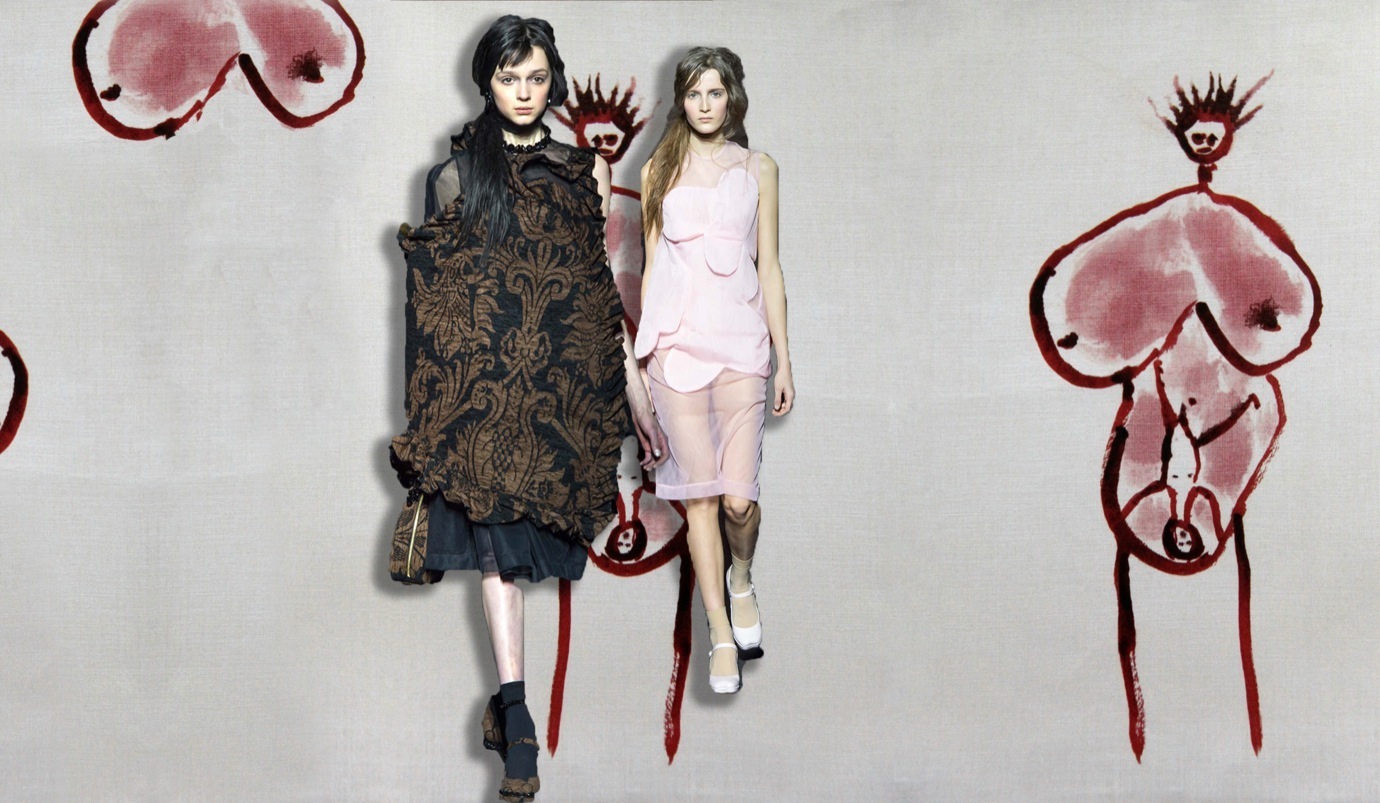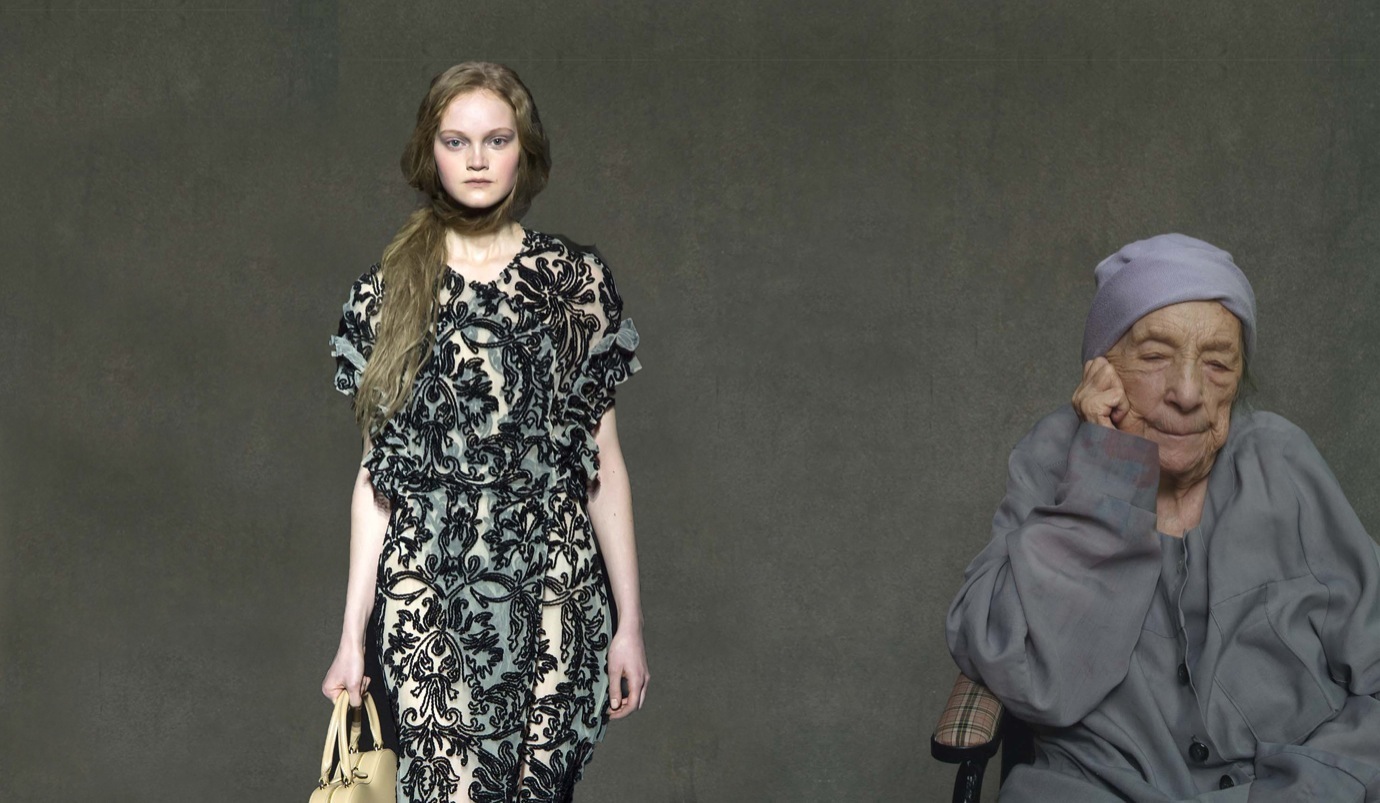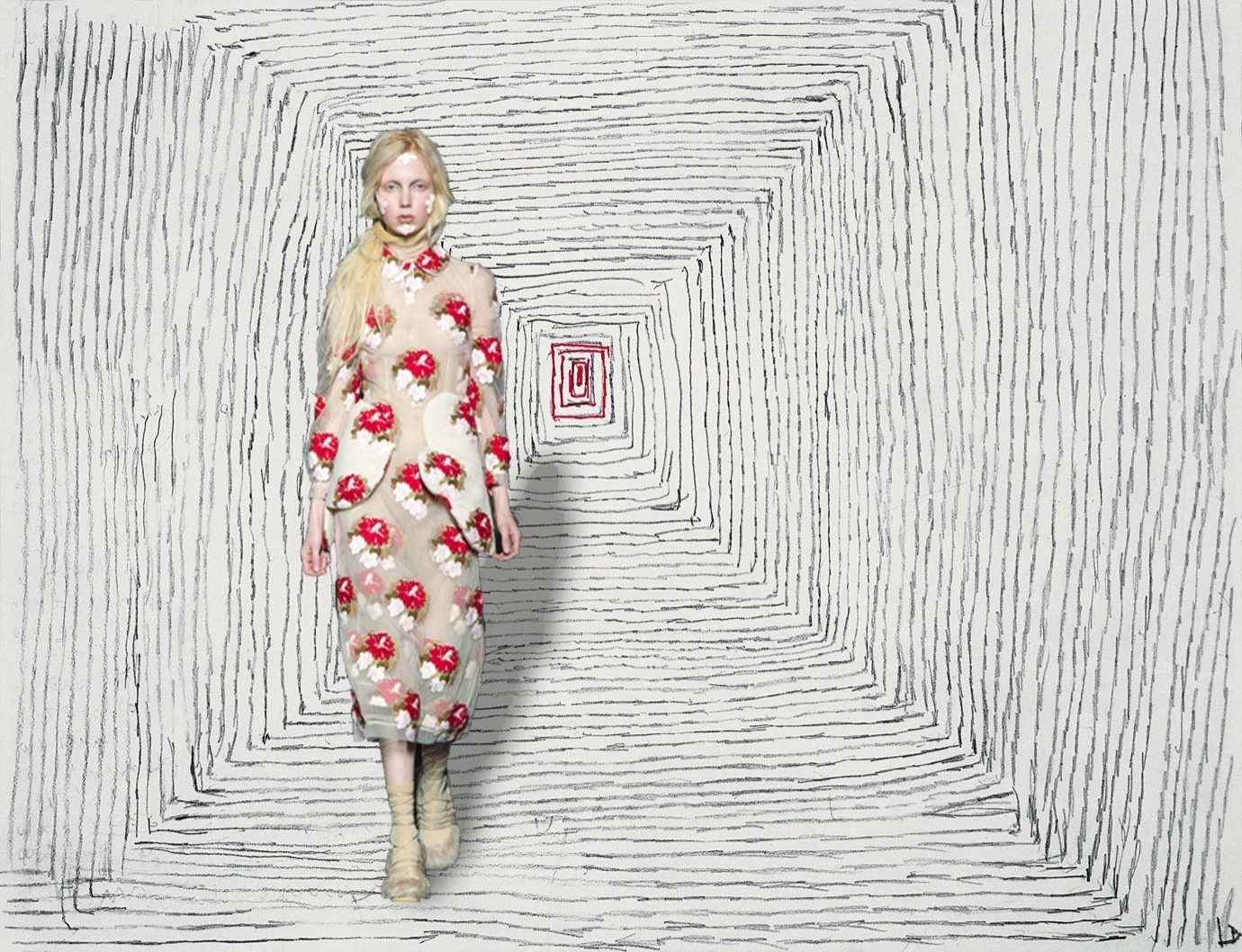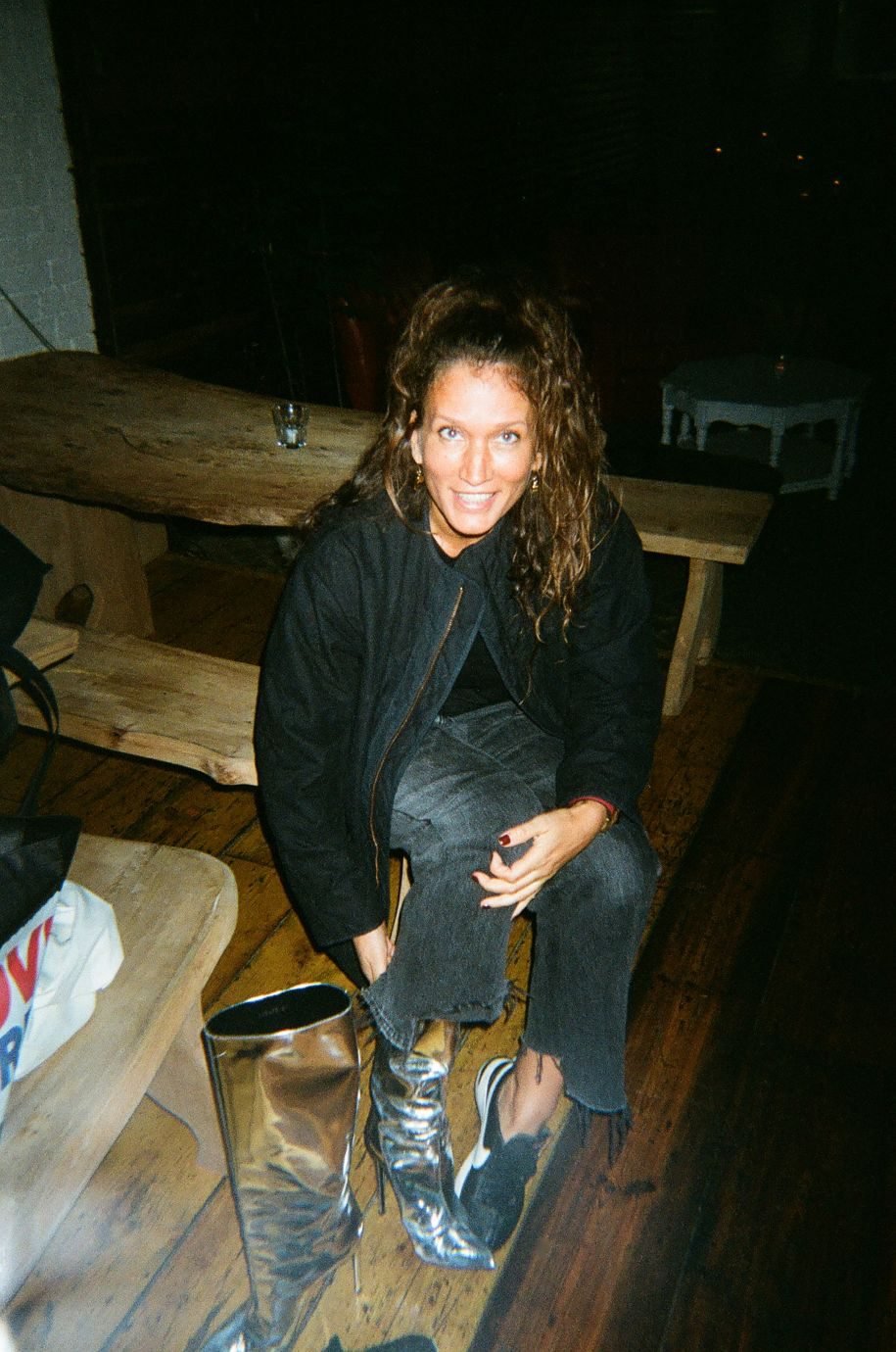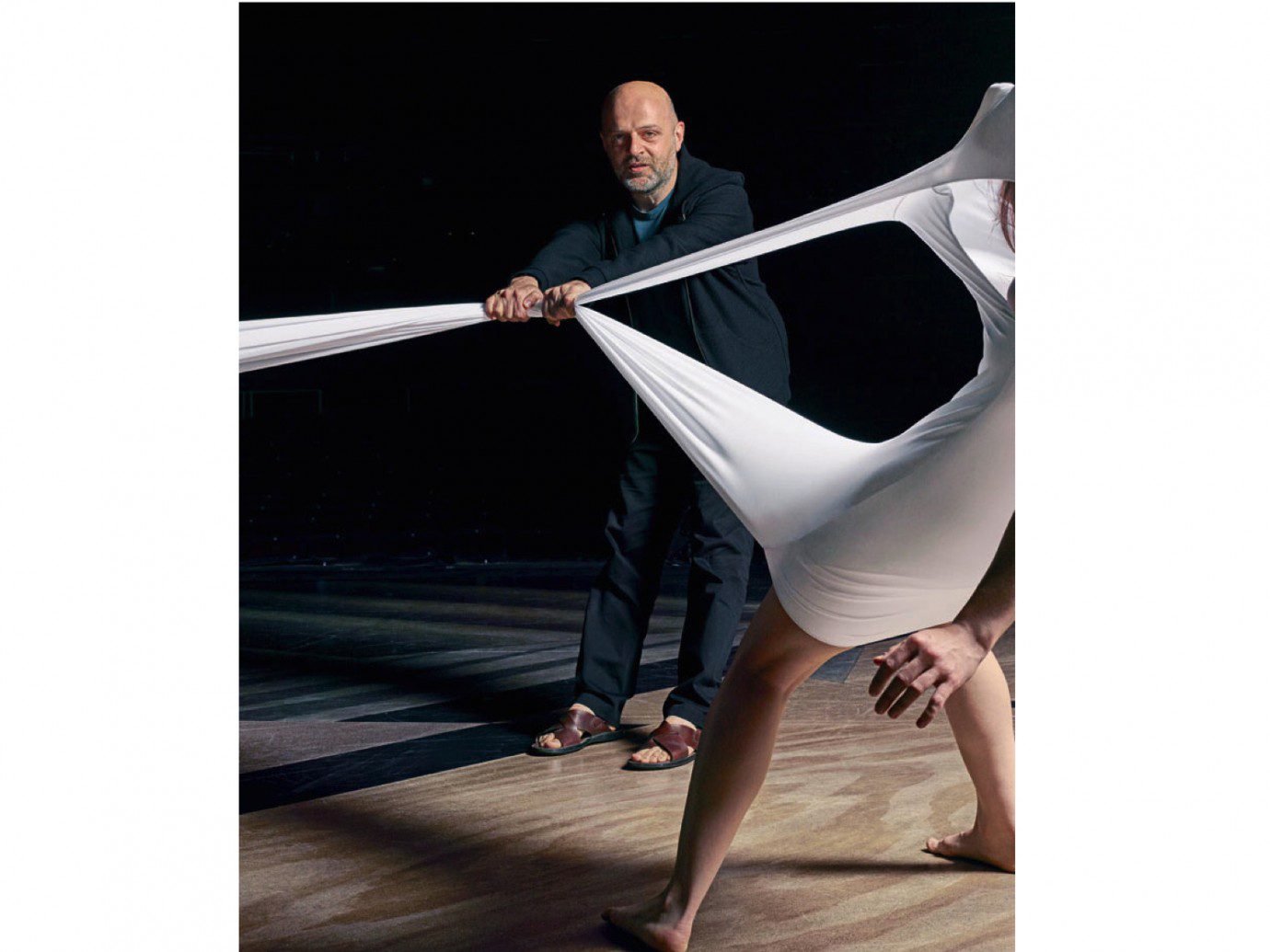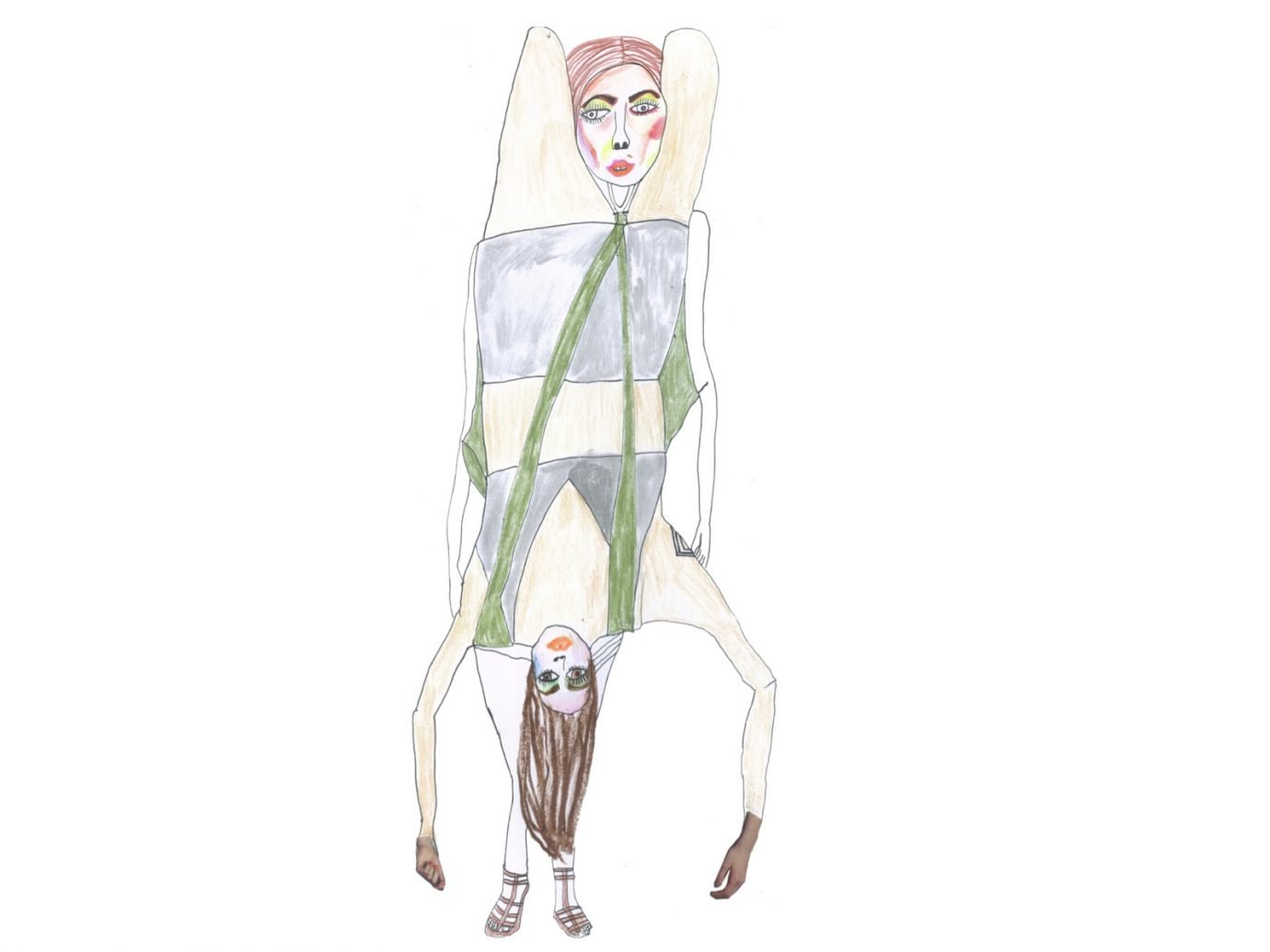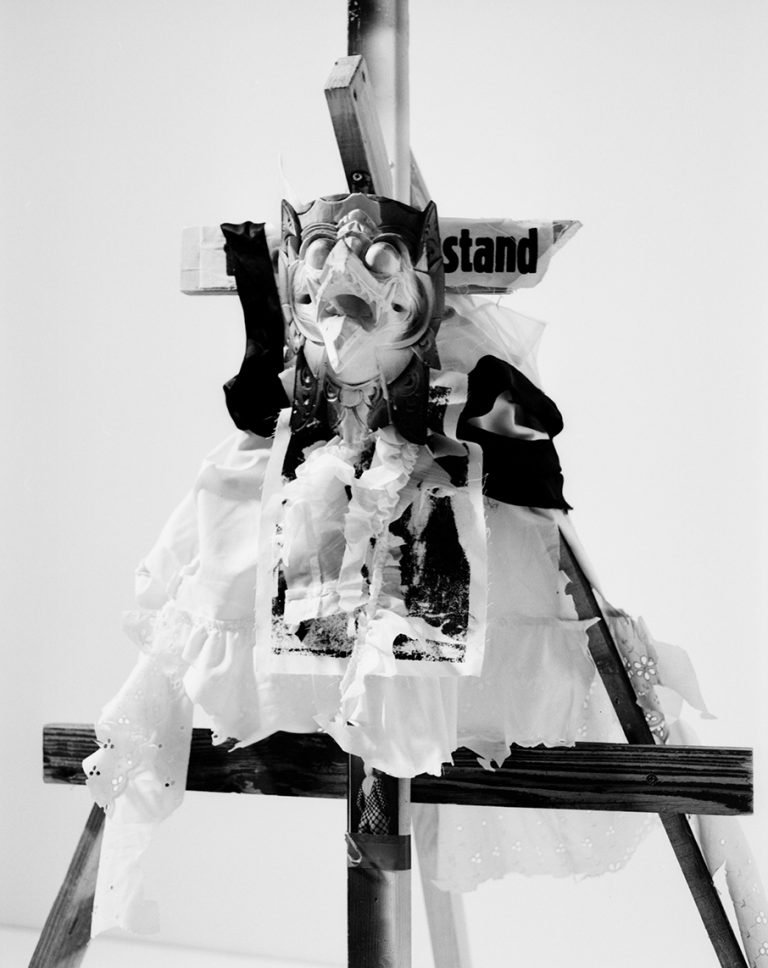Simone Rocha FW15
The intertextual review
A lot has been said about Simone Rocha’s new collection for FW15: ‘Simone Rocha has been killing it the past few seasons’, ‘Simone Rocha sent out her most accomplished collection to date’, ‘Rocha’s collections are collectible for generations of women’. We were interested to see how all these different thoughts and opinions would work together as one, and decided to break down a handful of different reviews on her last collection, and piece them together with fragments of interviews, and excerpts from a talk between Anna Wintour and Suzy Menkes, in which Simone sat in the audience and also opened up about her experiences in the industry. In between these (clickable) quotes, you will find traces of our own thoughts. What follows is a review of reviews: a new way of reviewing?
Maybe the press digested it right this season, maybe they didn’t. All we know is that Simone Rocha has been killing it the past few seasons, expanding the aesthetic vocabulary of her young brand at lightning speed in a series of hauntingly beautiful collections. In the aptly grand setting of London’s Guildhall, with its backdrop of stained glass windows, Simone Rocha sent out her most accomplished collection to date. (Funnily enough this Elle review clashes a bit with that of Style.com, which says, “Rocha may have been resting a bit on her laurels this season, but you still sensed her creative restlessness in these clothes.”)
What stood out most were the damask-style tapestry materials that looked as if they could have been taken from a Renaissance portrait of a Medici (where they would have been used to convey status and wealth). In previous collections, it has been relatively easy to trace her childhood in Ireland or her father’s Asian background. For the Autumn/Winter 2015 season, the clothes seemed less innocent; more historical and religious.
Simone’s background and family is indeed something which is very important to her, and makes the brand work. She has given insight about this during a talk between Anna Wintour and Suzy Menkes last year: “My business partner is my mom, who has worked in the industry for years, so it’s a huge advantage. The advantage of family and partners is bouncing ideas off. It’s not a one-man show. For me it’s really important to be able to flesh things out, I need somebody else to think of other sides of the business. Like your sales, like your distribution, like your customer. ” But then she’s also mentioned, “It’s very funny working with my mum because we’re completely different.” How? “She’s, um, really nice!” Simone laughed. “I’m very yes or no. I know what I like and I don’t like. That’s how I work on my collection. I can be quite cut-throat with myself. I’ll say, ‘I know it’s a good skirt but it’s out. It’s out!'” She kills her darlings then? “Oh, that’s good,” Simone enthused. “I might keep that.”
Backstage after the show last weekend, Simone mentioned the styling and ‘editing’ of her own shows once more (which we overheard):
Journalist: Do you always do it without a stylist?
Simone Rocha: Yeah, I’ve been doing it myself for four seasons.
Why do you prefer to work like that?
It’s a very intimate personal thing for me, I like to feel super connected to the work, and hair and makeup, so we just kind of cradle our little world together.
Does that make it difficult though, when it comes to editing down the collection? Because you’re the one who has to do the editing?
Yeah but I think I should, I put them there in the first place.
But it gets very hard, doesn’t it, to do that.
You have to sort of step back from it. Try and look at it with your head.
“I style each show, and I always want to take it to a specific place.” This season, she took it all to the Guildhall — a historical building in Bank that still had all tapestries on the walls when she first came to see it; something which originally inspired her, and something that was definitely visible in her FW15 collection.
“I so admire her tapestries as well as the ones here,” was something Simone said about the Guildhall’s decor while referencing her main inspiration behind the collection: Louise Bourgeois — about whom she’s written her thesis in art school in Dublin.
Bourgeois’s tapestries [are] themselves inspired by the artist’s childhood and the hours she would spend sewing alongside her mother as she did her restorations in the family’s Paris workshop. When restoring tapestries for prudish clients, Bourgeois’s mother would cut out any images of genitalia and replace them instead with tapestry flowers. “I got to visit her little house in New York after she had passed and was absolutely blown away. There were all these little drawings… Her work is so witty, so smart, but crude at the same time,” Simone said. Bourgeois often dealt with issues of betrayal and anxiety within her work, so it makes sense that many of the looks seen today were physically different from front to back. Rocha [has also] described the process as “getting her body into the process,” and it felt as though Simone had something deep to express, but that she could articulate it only in clothes, not words.
But other people like to speak words about her. Louise Wilson, for example has praised her work: “Simone is like a fine wine. The thing I find interesting and brave about her work is that it is so deeply personal and she puts it out there, and that’s really quite rare for a female designer. I think women pick up on that; they sense something very sincere and honest in her clothes which feels refreshing and new.“
While this personal touch is definitely visible in her collections, working together with her mother and taking in different points of view really adds to the product in the sense that it will fit women of any age: “Every look here added to the feeling that Rocha’s collections are collectable for generations of women – not just her age group – clothes to cherish and wear for years to come.” Funnily enough, Simone touched upon this point during the Anna Wintour talk, and it’s something that comes from her family background. “Me and my mom are very different ages, so we think of different customers, and I think it’s really important that when you’re forging something with a strong identity. What I work with is really with a modern femininity — that you have someone else who can see how your identity can work in different areas. You know, it’s not like one road; there are so many different paths. And I think that’s really important when you come out of college to know that there’s… – I’m super fortunate that my family were in the business, but everybody does a completely different route and there’s so many different ways to set up a label and different types of support. I think it’s really important to know that.”
“I think that a huge part of growing up in the industry was being aware of how good quality things should be,’ Simone says. ‘Because I’ve been around it my whole life I feel I know how something should look, so I set really high standards from the get-go. [And] a big thing I learned in college was to not spend time on things you’re comfortable with. That’s what it is, being creative.“
Traces of Vogue #1, Vogue #2, Style.com #1, Style.com #2, The Telegraph #1, The Telegraph #2, Financial Times, Grazia, ELLE, Dazed Digital
But other people like to speak words about her. Louise Wilson, for example has praised her work: “Simone is like a fine wine. The thing I find interesting and brave about her work is that it is so deeply personal and she puts it out there, and that’s really quite rare for a female designer. I think women pick up on that; they sense something very sincere and honest in her clothes which feels refreshing and new.“
While this personal touch is definitely visible in her collections, working together with her mother and taking in different points of view really adds to the product in the sense that it will fit women of any age: “Every look here added to the feeling that Rocha’s collections are collectable for generations of women – not just her age group – clothes to cherish and wear for years to come.” Funnily enough, Simone touched upon this point during the Anna Wintour talk, and it’s something that comes from her family background. “Me and my mom are very different ages, so we think of different customers, and I think it’s really important that when you’re forging something with a strong identity. What I work with is really with a modern femininity — that you have someone else who can see how your identity can work in different areas. You know, it’s not like one road; there are so many different paths. And I think that’s really important when you come out of college to know that there’s… – I’m super fortunate that my family were in the business, but everybody does a completely different route and there’s so many different ways to set up a label and different types of support. I think it’s really important to know that.”
“I think that a huge part of growing up in the industry was being aware of how good quality things should be,’ Simone says. ‘Because I’ve been around it my whole life I feel I know how something should look, so I set really high standards from the get-go. [And] a big thing I learned in college was to not spend time on things you’re comfortable with. That’s what it is, being creative.“
Traces of Vogue #1, Vogue #2, Style.com #1, Style.com #2, The Telegraph #1, The Telegraph #2, Financial Times, Grazia, ELLE, Dazed Digital

